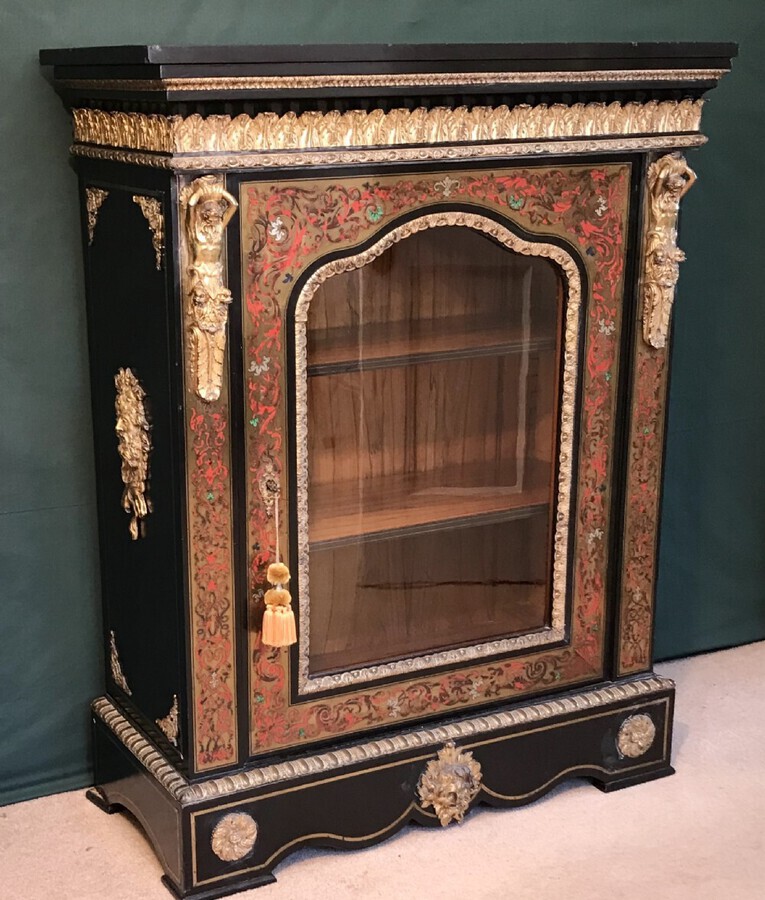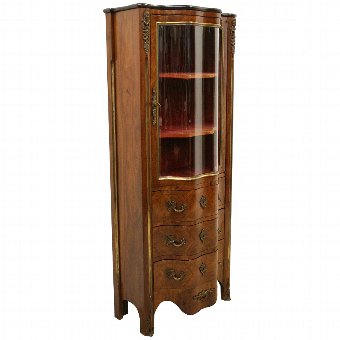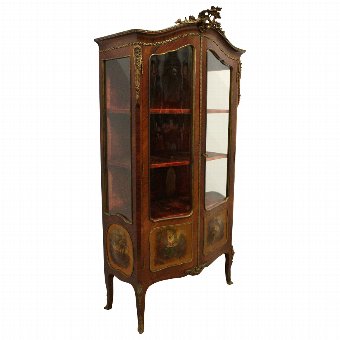featured item
antique french vernis martin vitrine display cabinet 19th c

antiques available from other sellers in antique furniture > display cabinets
-
![Exceptional Quality Napoleon 3rd Boulle Cabinet. Vitrine, Pier Cabinet Circa 1860]() £2200.00
£2200.00exceptional quality napoleon 3rd boulle cabinet. vitrine,... Read more
Frank Craig Antiques -
![French Rosewood Serpentine Display Cabinet]() £2475.00
£2475.00french rosewood serpentine display cabinet Read more
Georgian Antiques -
![French Kingwood Vernis Martin Cabinet]() £4750.00
£4750.00french kingwood vernis martin cabinet Read more
Georgian Antiques -
![Edwardian Mahogany Satinwood Hand Painted Display Cabinet]() £1495.00
£1495.00edwardian mahogany satinwood hand painted display cabinet Read more
FB Antiques
- View other items in:
- antique furniture
- display cabinets
Still not found something similar? Why not save a search and get a notification in your inbox when an matching antique is added to our ever-growing database?
Enter your email address to be sent alerts when new items are added to the site that match your search criteria

This is a stunning antique French louis XV RevivalVernisMartindisplay cabinet, circa 1880 in date.
Complete with original working lock and key.
It is very rare to find such an exquisite cabinet and it is sure to attract a lot of attention from your guests.
Condition:
Our reference: A2184a
Vernis Martin
is a lustrous lacquer substitute widely used in the 18th century to decorate furniture and such personal articles as brisé fans, snuffboxes and clocks. The process of adding bronze or gold powder to green varnish was perfected by the French brothers Guillaume and Etienne-Simon Martin, hence its name “Vernis Martin”, as Vernis is French for varnish.
Ormolu(from French 'or moulu', signifying ground or pounded gold) is an 18th-century English term for applying finely ground, high-caratgoldin amercuryamalgamto an object ofbronze.The mercury is driven off in akilnleaving behind a gold-coloured veneerknown as'gilt bronze'.
Antiques.co.uk Ref: WRBNV5F2X
- Width (cm):
- 85
- Height (cm):
- 170
- Depth (cm):
- 43
Here on antiques co uk we love antiques and specialise in selling antiques. Even though this item was for sale and is now sold or otherwise now unavailable we have many more items for sale including vintage antiques, silver, tables, watches, jewellery and much more for your interiors and home.
Search all the antiques currently for sale on www.antiques co uk. Or why not consider selling your antiques and making sales more easily with us!
regent antiques limited
Regent Antiques Limited has 986 antiques for sale.
click here to see them all










